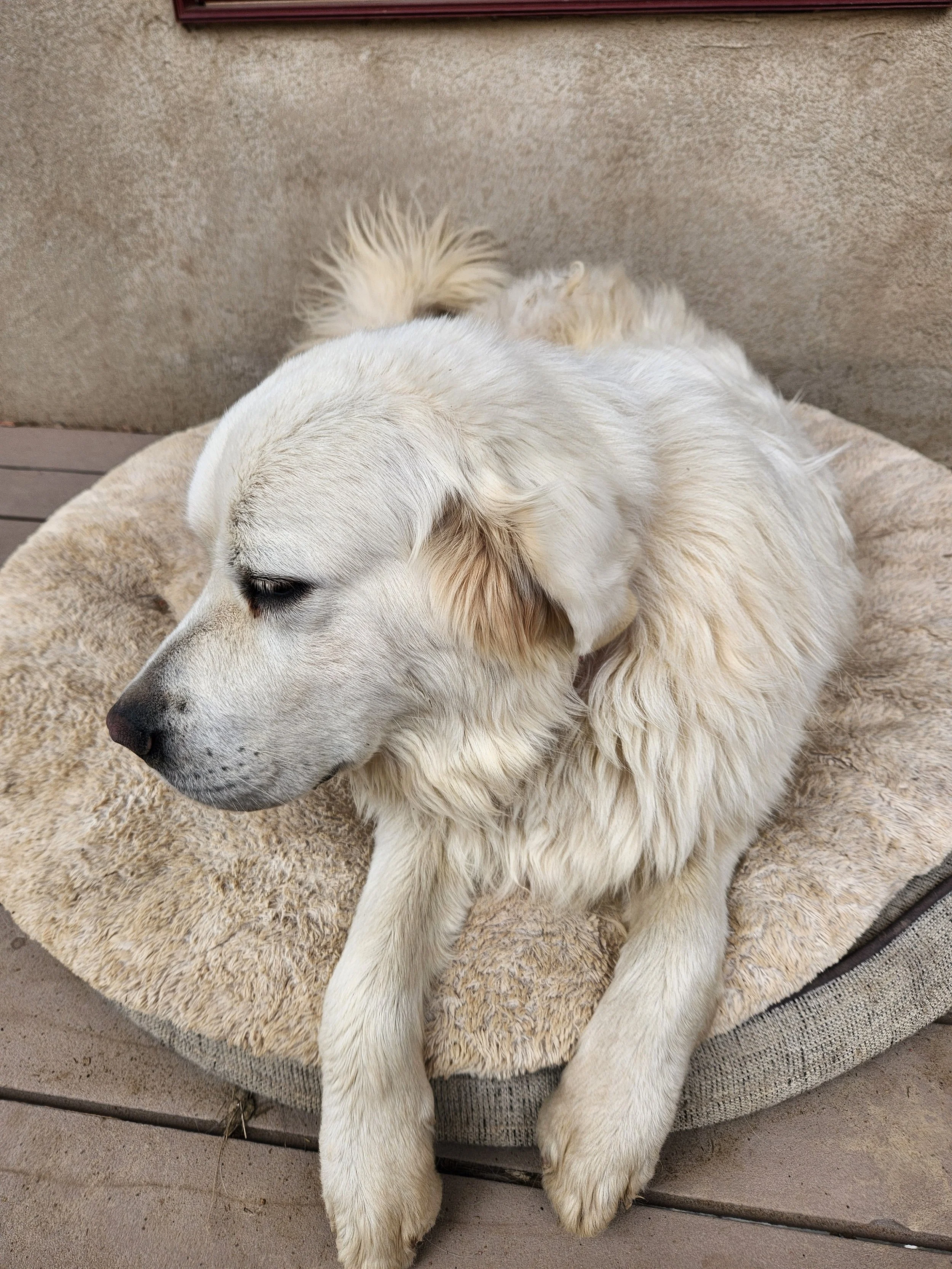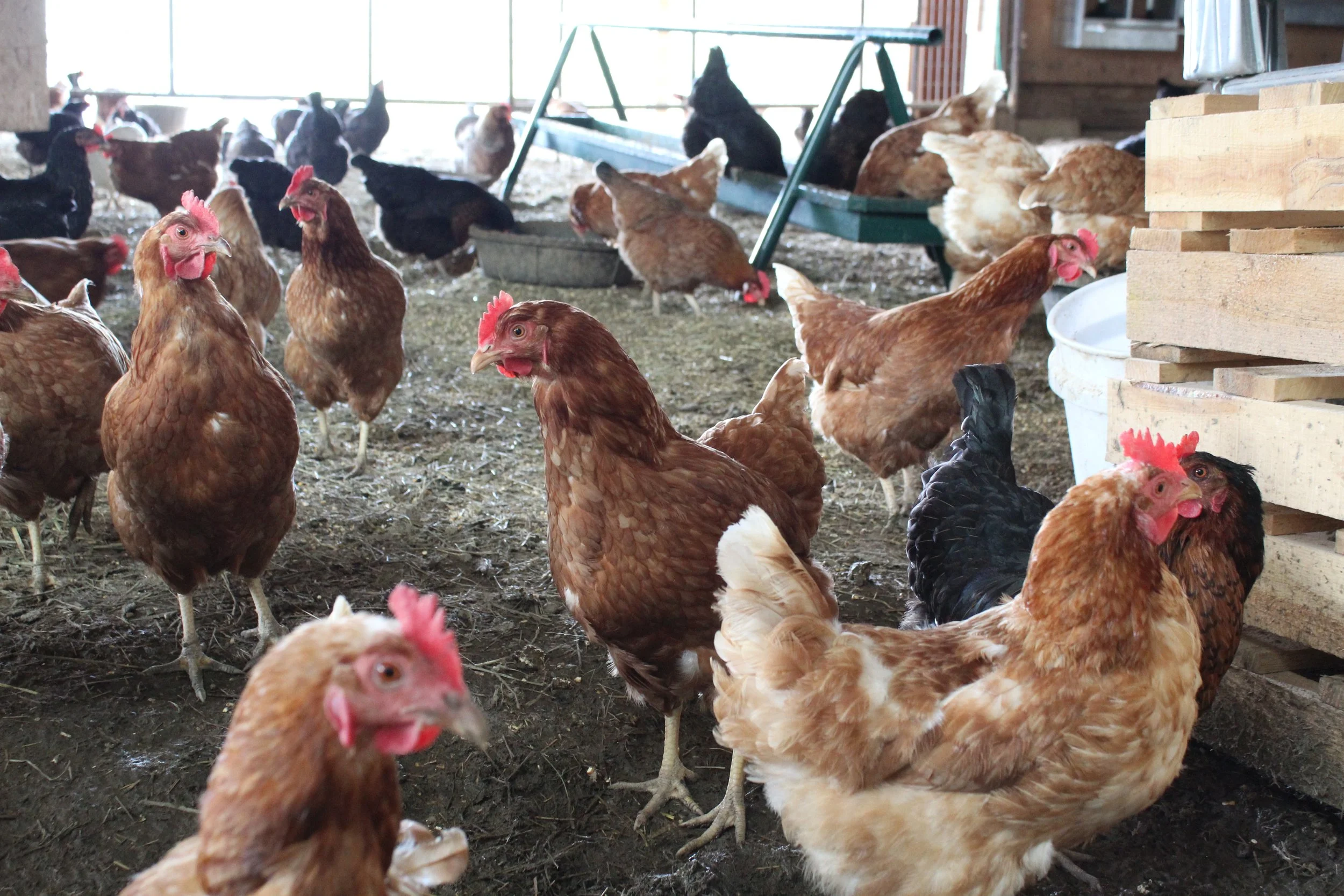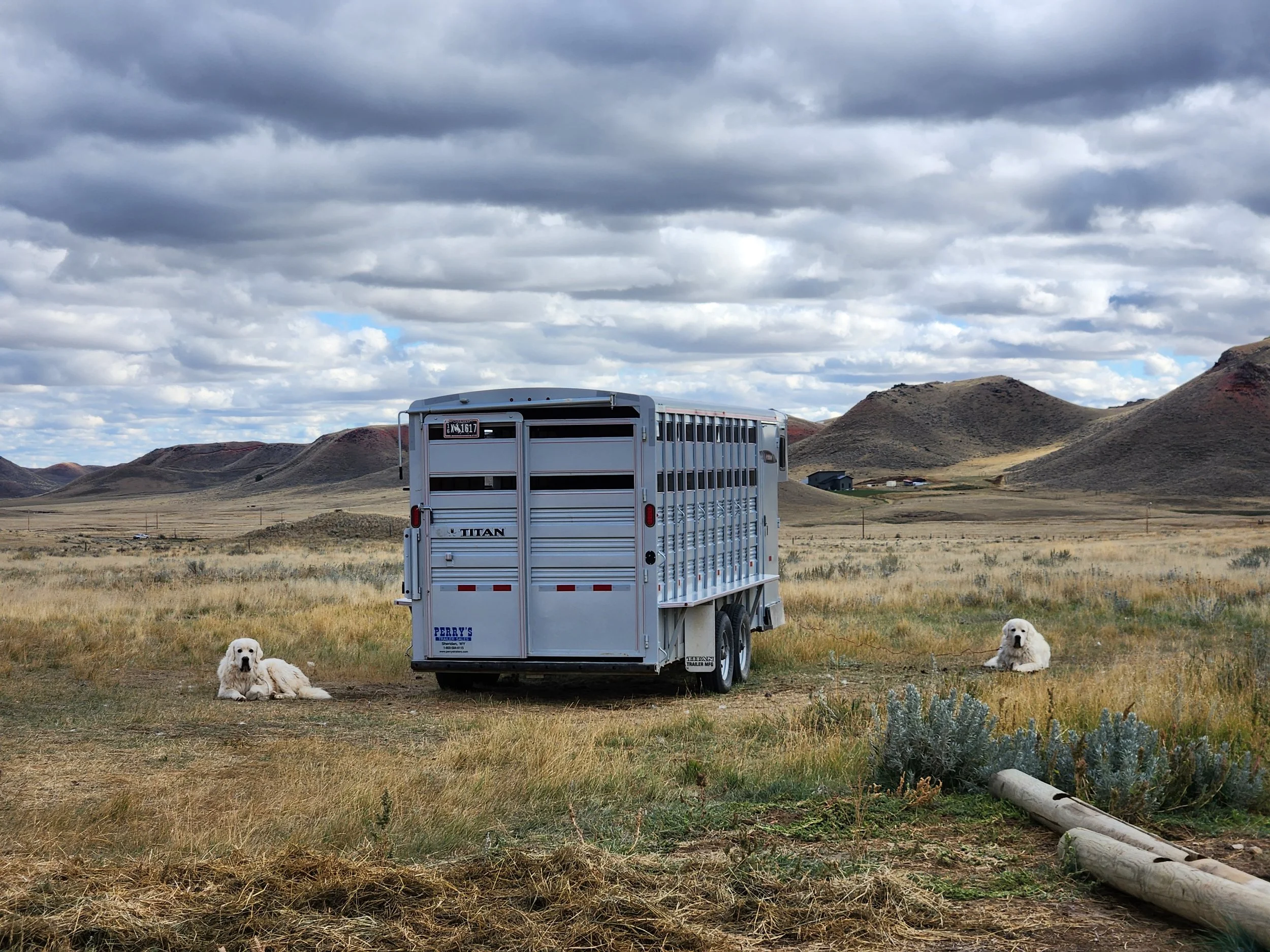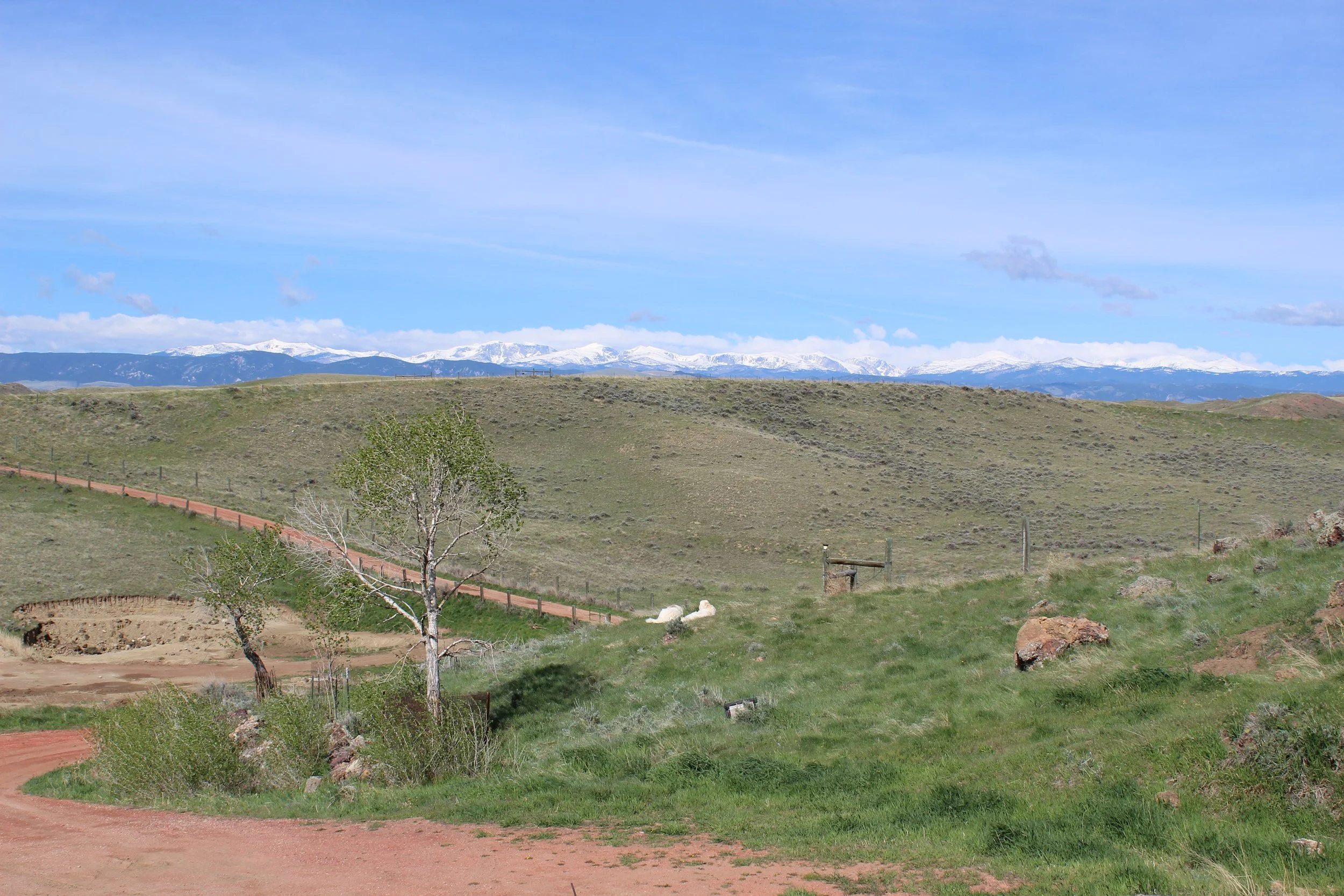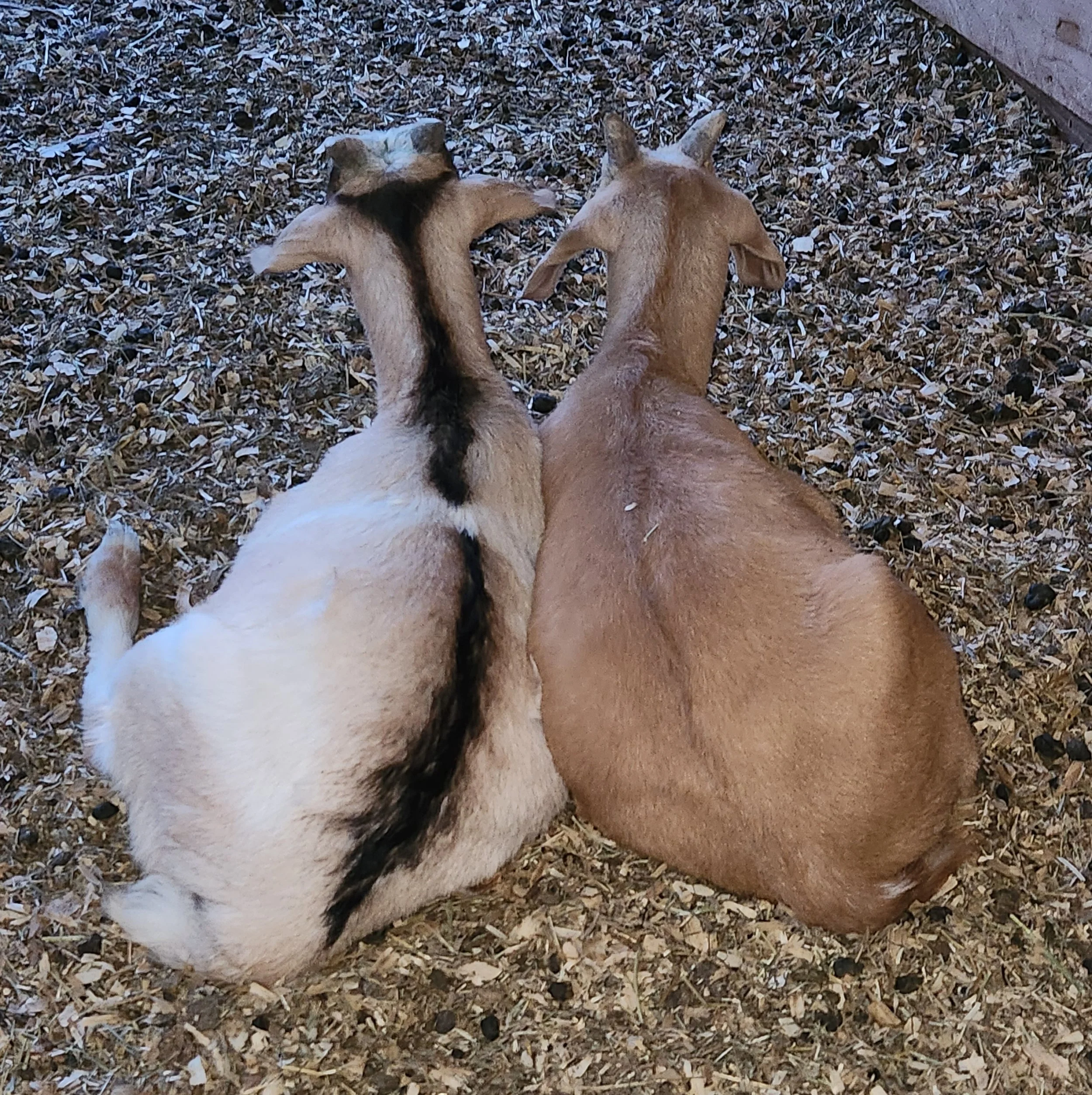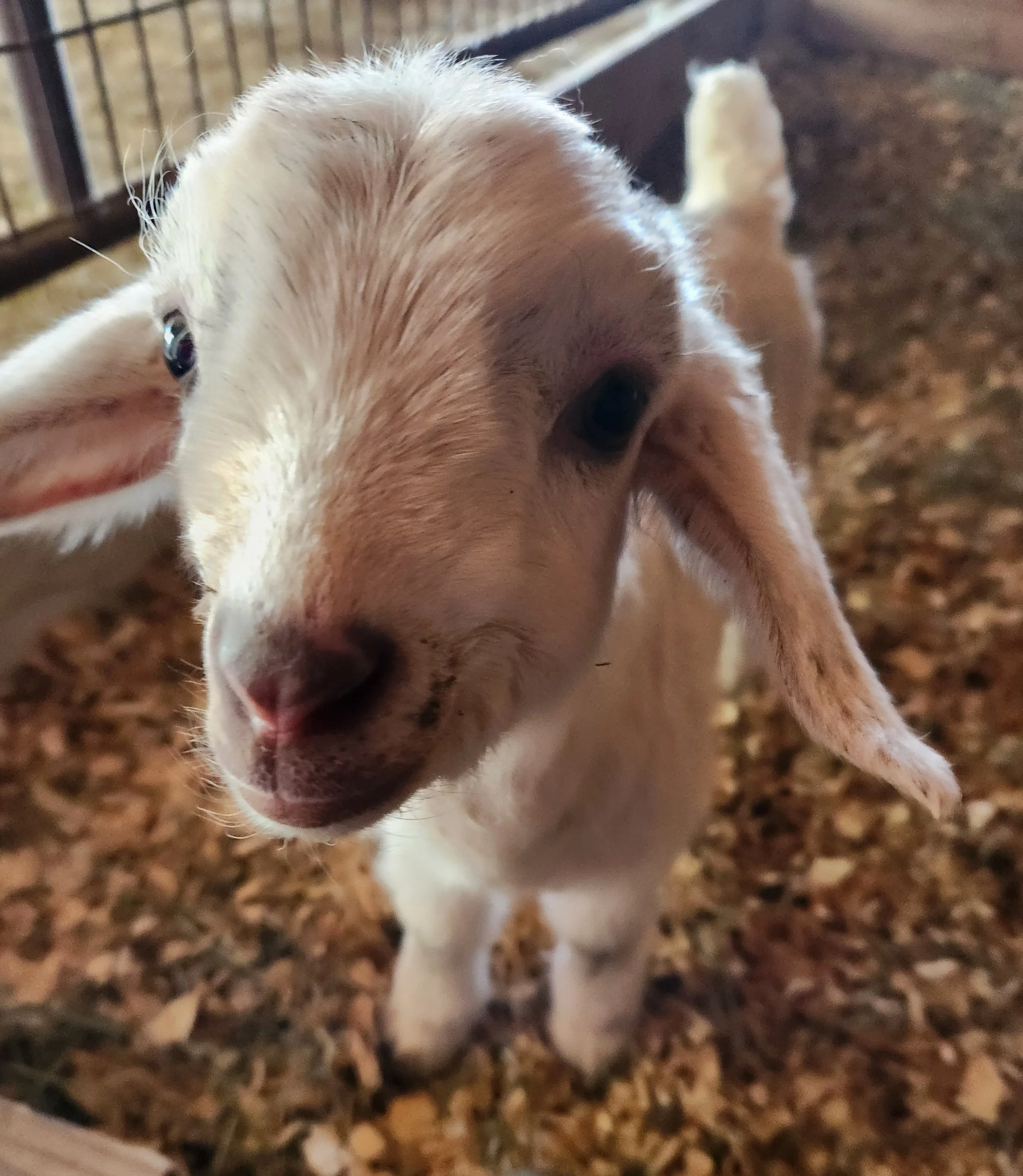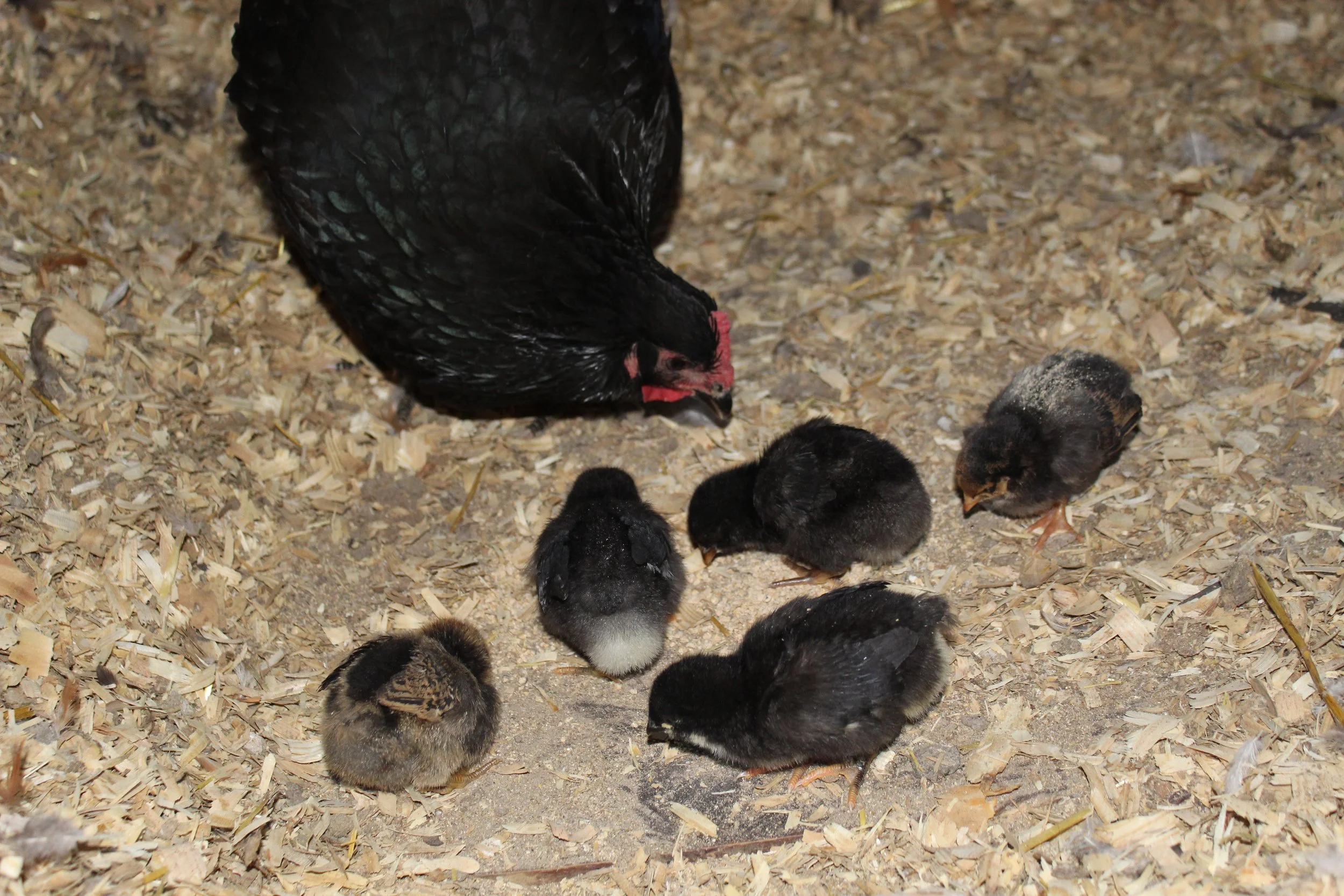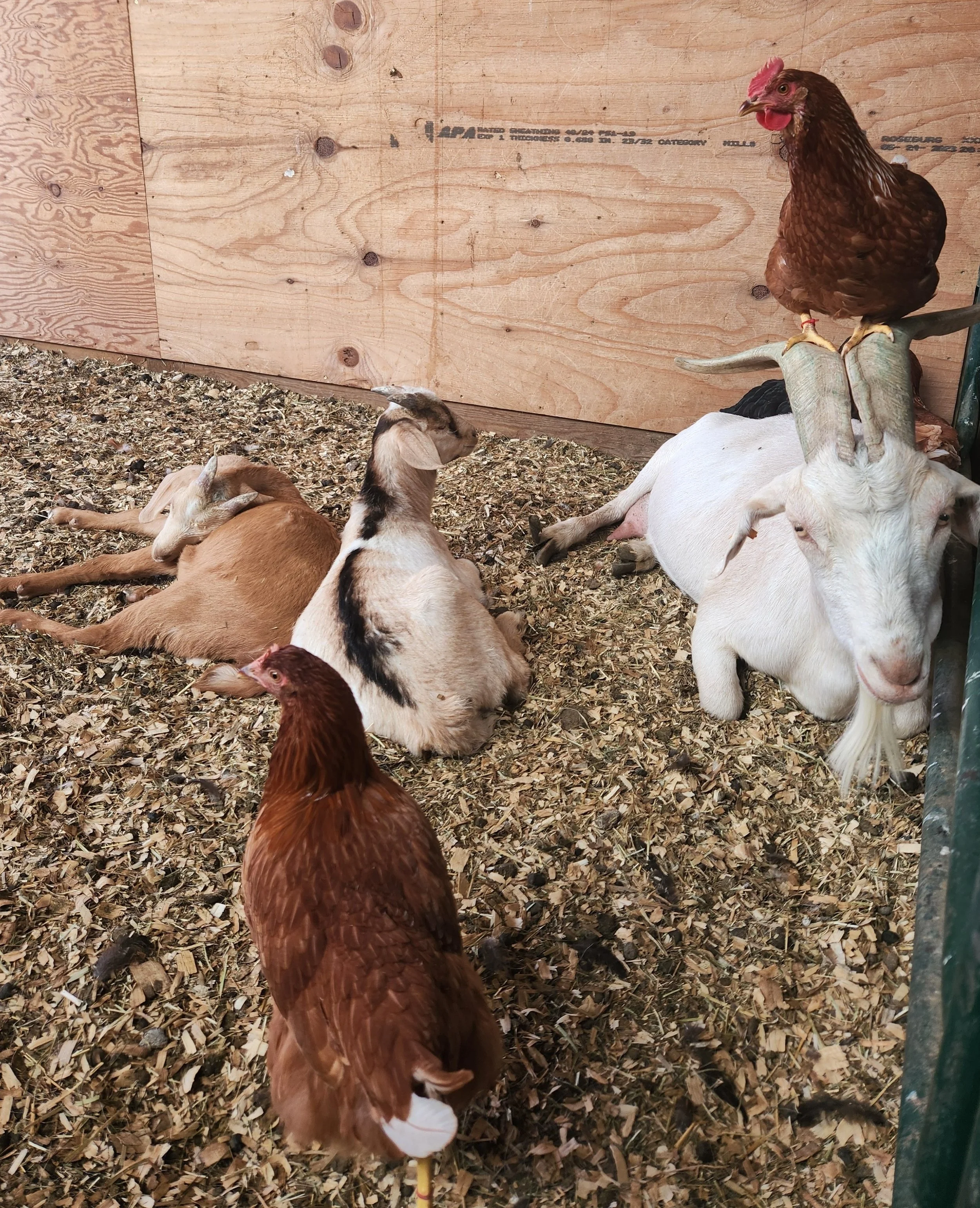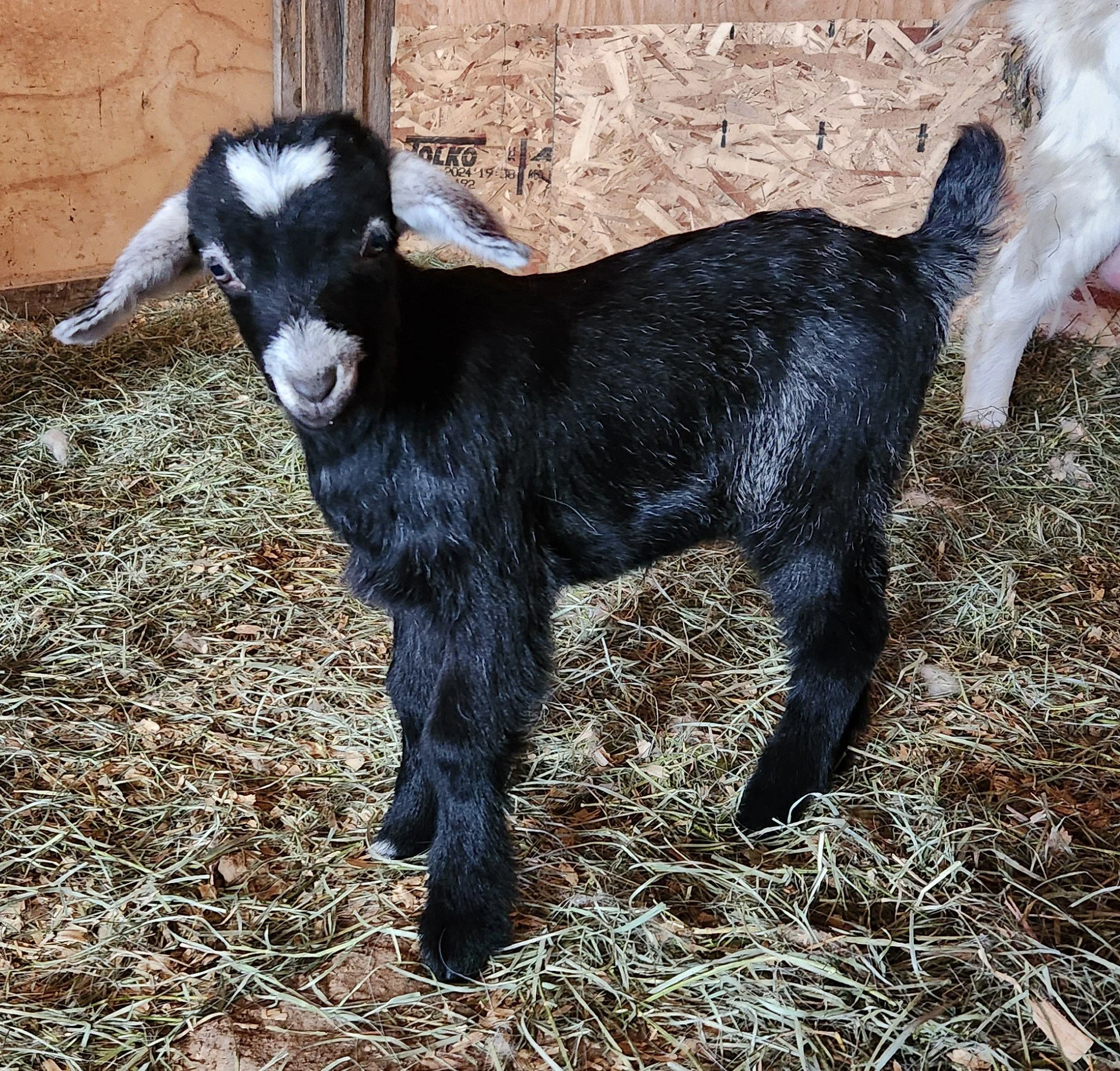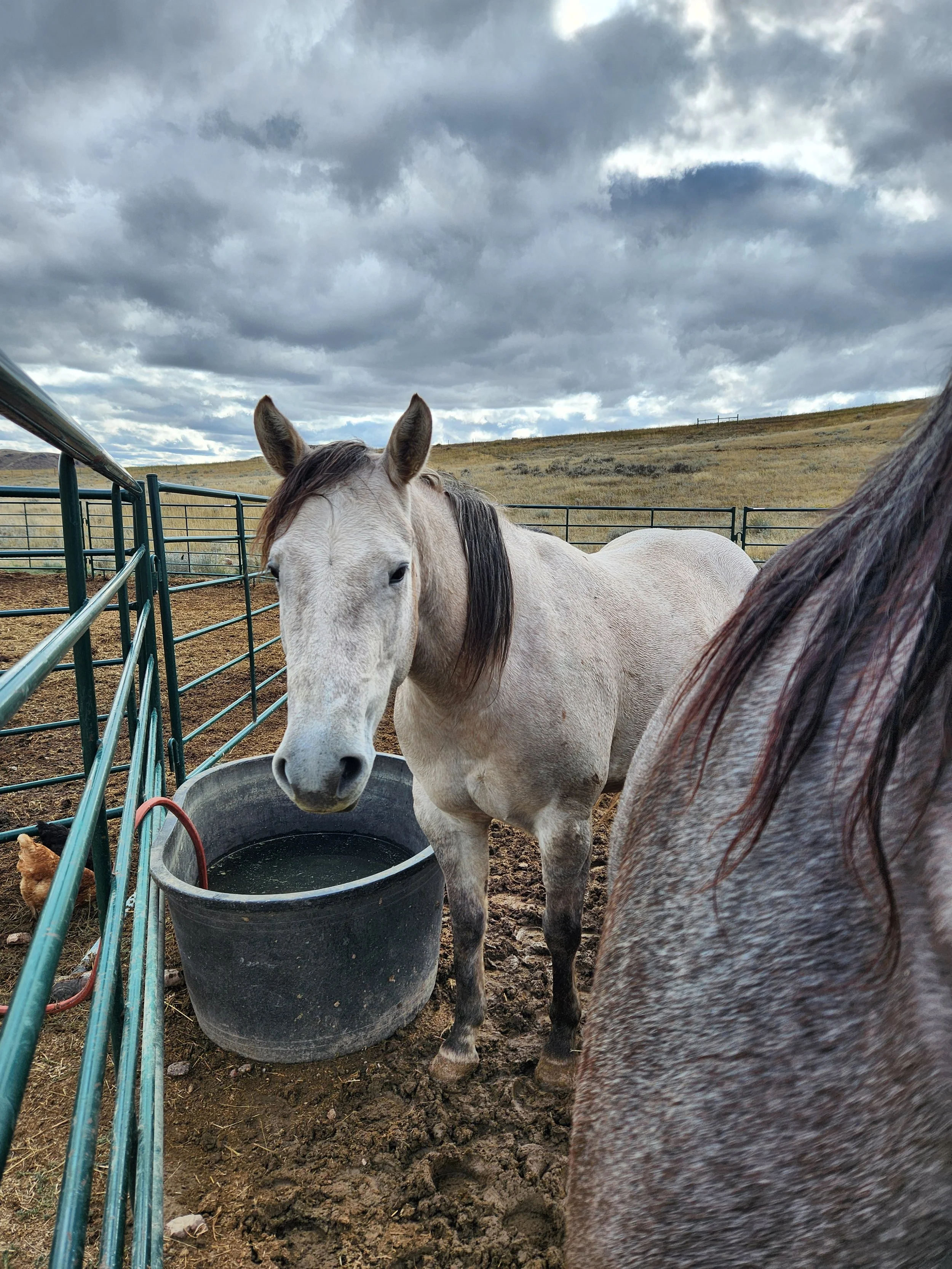Many animals contribute to Frevitt Ranch. Please meet some of our employees!
The Puffs
Shakti is our 3 year old Livestock Guardian Dog. She received training from Lonnie’s Maremma, Shiva, before we lost him to cancer far too soon. Shakti supervises the two younger dogs, Loki (2) and Thor (1). Shakti was born at Apple Valley Tatras near Sheridan, WY. She is talented at protecting the livestock, and herding pronghorn herds who come into the paddock. Milky kibbles are her favorite, followed by cheesy kibbles. She accepts duck jerky as a treat.
The Hens
We love our Red Star hens. They are friendly and lay lots of beautiful, large eggs. We also have some Black Stars and Black Australorps, and a few Whiting True Blue who lay our blue eggs. We also have two Red Star roosters.
We have a multi-stage process for raising the chicks. Upon arrival, they move from their shipping crate into our bathtub in the house. This way, Katharine can micromanage them when they are at their most vulnerable. It’s also easier to manage the temperature while they’re in the house, no matter what the season.
The Roos
We have two Red Star roosters, chosen because they are the most docile in our experience. The roosters perform an important function. They keep the peace between the hens! We went without a rooster for the last year, and we experienced a significant increase in hen-on-hen violence. There is a literal pecking order in the flock, and sometimes the ladies take it too far if there’s no rooster to break them up.
The Cattle
The Goats
The Horses
Did you know that the red spot you find in the occasional egg is not caused by the roosters? The red spot, a tiny blood spot, does not indicate whether the egg is fertilized or not!
Blood spots occur when a small blood vessel ruptures during the formation of the egg. This can happen in the ovary, oviduct, or yolk itself, depending on which part of the hen’s anatomy the egg is in when the rupture occurs.
There is nothing wrong with the egg. Eat it as is, or scrape off the spot.
Next, the week-old chicks move to “the spa.” This is a converted fiberglass methane hut, about 8’ x 10’. It’s close to the house so Katharine can still micromanage them. But in this larger space, the chicks have more space for their feeders and waterers and more heating apparatus (necessary because the methane hut is not insulated). After the chicks destroy the grass, we open up the large flake pine shavings (back left) and spread them out periodically to prevent the chicks from eating their own poo. They get sick if they eat their own poo. The chicks stay in here for about a month, until they are feathered out and able to stay warm without the heating lamp.
Loki (2), on the right, and Thor (1), on the left, are the junior Livestock Guardian Dogs. They are in training. Loki and Thor both came to us from KoSea Farms in Recluse, WY. Loki is obsessed with Shakti’s adult kibbles. Thor is often pushed off his food by Loki and will eat just about anything.
Collectively called “The Puffs,” our small but mighty team protect the “flerd” (flock-herd) to the best of their abilities.
Hens come out to eat a snack
Finally, the juveniles move to the barn. They have a lot more space, but still remain in confinement to protect them from the older hens. The older hens would peck at the juveniles and injure them. So, we keep them confined with more pine shavings, bigger feeders, bigger waterers and eventually we add in some roosts for them to sleep on.
When the juveniles achieve their full size, we put a color coded band on one of their legs, hen by hen, and send them out to meet the rest of the flock. It’s important for there to be a critical mass of the young hens on freedom day, so they can defend themselves from the older hens.

